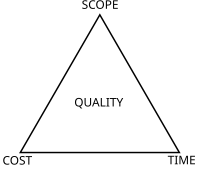
Photo from wikipedia
Evaluating practice design is an important component of supporting skill acquisition and improving team-sport performance. Constraint manipulations, including creating a numerical advantage or disadvantage during training, may be implemented by… Click to show full abstract
Evaluating practice design is an important component of supporting skill acquisition and improving team-sport performance. Constraint manipulations, including creating a numerical advantage or disadvantage during training, may be implemented by coaches to influence aspects of player or team behaviour. This study presents methods to evaluate the interaction between technical, tactical and physical behaviours of professional Australian Football players during numerical advantage and disadvantage conditions within a small-sided game. During each repetition of the game, team behaviour was manually annotated to determine: repetition duration, disposal speed, total disposals, efficiency, and disposal type. Global Positioning System devices were used to quantify tactical (surface area) and physical (velocity and high intensity running) variables. A rule association and classification tree analysis were undertaken. The top five rules for each constraint manipulation had confidence levels between 73.3% and 100%, which identified the most frequent behaviour interactions. Specifically, four advantage rules involved high surface area and medium high intensity running indicating the attacking team’s frequent movement solution within this constraint. The classification tree included three behaviour metrics: surface area, velocity 1SD and repetition duration, and identified two unique movement solutions for each constraint manipulation. These results may inform if player behaviour is achieving the desired outcomes of a constraint manipulation, which could help practitioners determine the efficacy of a training task. Further, critical constraint values provided by the models may guide practitioners in their ongoing constraint manipulations to facilitate skill acquisition. Sport practitioners can adapt these methods to evaluate constraint manipulations and inform practice design.
Journal Title: PLOS ONE
Year Published: 2022
Link to full text (if available)
Share on Social Media: Sign Up to like & get
recommendations!